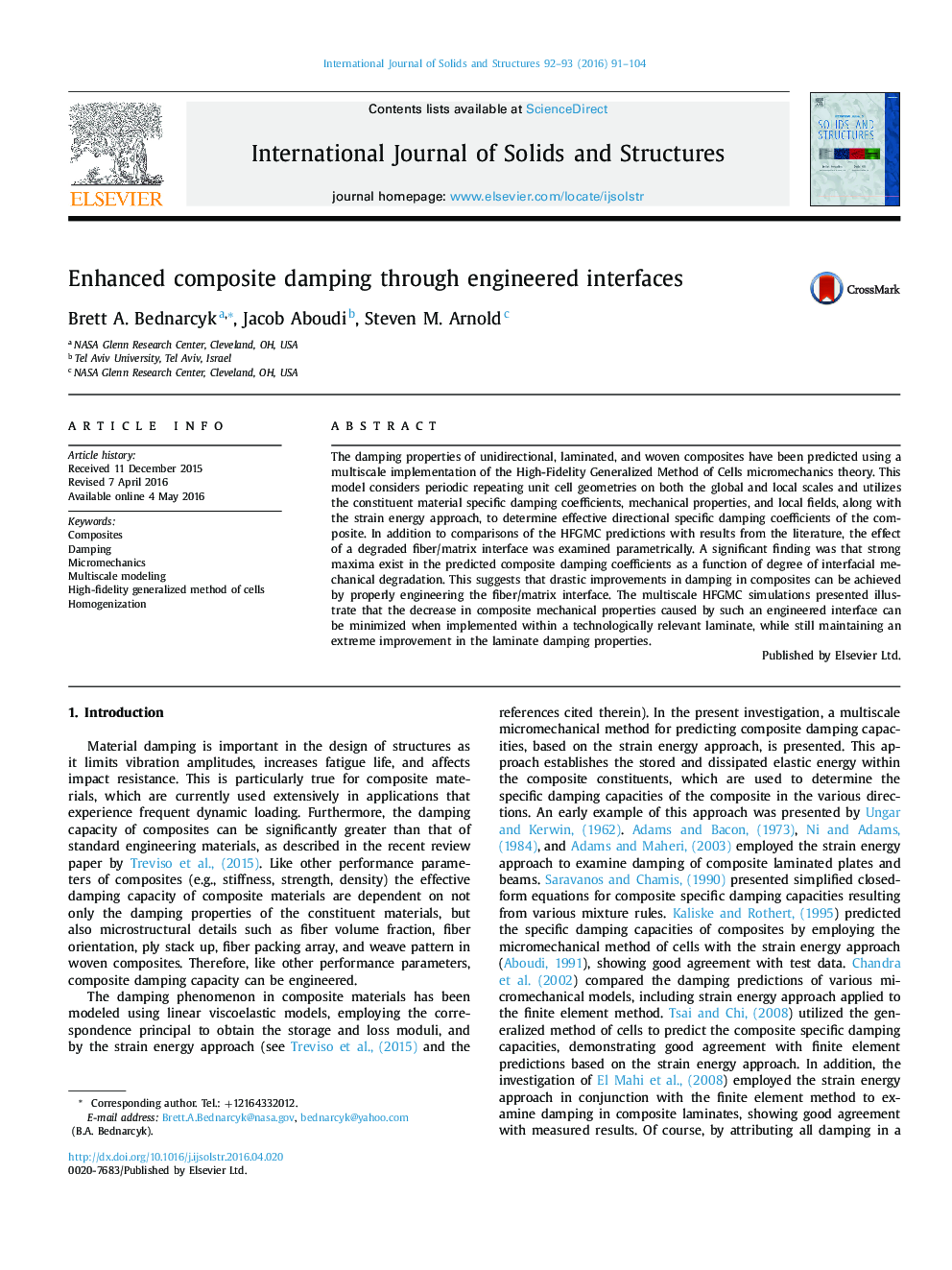| Article ID | Journal | Published Year | Pages | File Type |
|---|---|---|---|---|
| 277154 | International Journal of Solids and Structures | 2016 | 14 Pages |
The damping properties of unidirectional, laminated, and woven composites have been predicted using a multiscale implementation of the High-Fidelity Generalized Method of Cells micromechanics theory. This model considers periodic repeating unit cell geometries on both the global and local scales and utilizes the constituent material specific damping coefficients, mechanical properties, and local fields, along with the strain energy approach, to determine effective directional specific damping coefficients of the composite. In addition to comparisons of the HFGMC predictions with results from the literature, the effect of a degraded fiber/matrix interface was examined parametrically. A significant finding was that strong maxima exist in the predicted composite damping coefficients as a function of degree of interfacial mechanical degradation. This suggests that drastic improvements in damping in composites can be achieved by properly engineering the fiber/matrix interface. The multiscale HFGMC simulations presented illustrate that the decrease in composite mechanical properties caused by such an engineered interface can be minimized when implemented within a technologically relevant laminate, while still maintaining an extreme improvement in the laminate damping properties.
